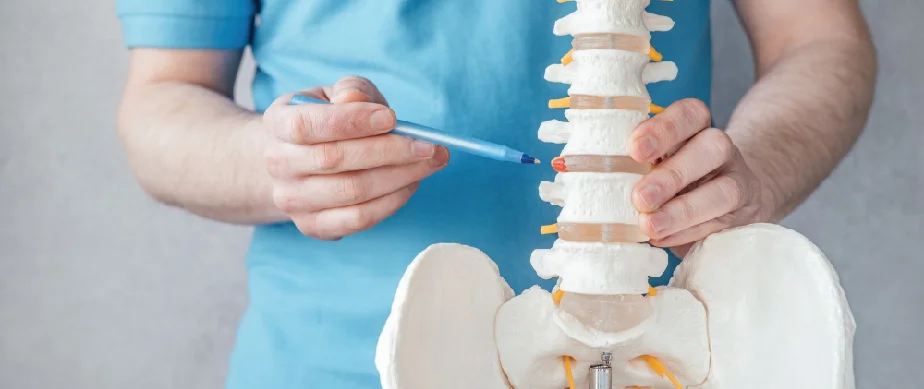
Book an Appointment
Call Us01140846835Scoliosis: Treatments That Can Make an Impact
Scoliosis is a common spine deformity characterized by an abnormal C or S-shaped curvature in the spine when viewed from the front or back. It primarily develops in infancy or early childhood and can affect anyone. In many cases, the exact cause of this is not known, which means that the scoliosis is idiopathic, in others, it is the result of a congenital malformation, underlying neuromuscular disorders or a degenerative spine condition. Scoliosis can have a significant impact on a person’s life, however, experts specializing in scoliosis correction surgery in Delhi suggest that medical advancements have led to various treatments that can make a profound impact on managing and improving this condition.
How can Scoliosis Impact One’s Life?
The severity of scoliosis is measured by the degree of curvature. A curve greater than 25 to 30 degrees is considered to be moderate, whereas those greater than 45 to 50 degrees are considered to be severe, calling for the need for scoliosis spine surgery. The condition affects different people in different ways and the impact is not just limited to physical pain and discomfort. It can negatively affect a person’s self-esteem and confidence. Many people with scoliosis experience challenges related to mobility, with loss of function. In extreme cases, abnormal curvature can lead to increased pressure on the internal organs, especially the lungs, disrupting their normal function and giving rise to complications like breathing difficulties.
Scoliosis Spine Surgery: Interventions that can Make an Impact
Scoliosis spine surgery is not an option for everyone and it is typically recommended for patients who have severe spine curvature that cannot be addressed using conservative treatments. Here are some notable surgical treatments for scoliosis, by experts specialising in scoliosis correction surgery in Delhi:
Spinal Fusion: It is one of the most common surgical interventions used for treating scoliosis. It involves fusing two or more vertebrae using bone grafts and sometimes metal implants, such as rods and screws. This creates a solid bone structure that prevents further curvature progression. The surgery can be performed using the conservative technique, or by following a minimally invasive approach.
Growing Rods: Often used in children with severe scoliosis, growing rods are surgically attached to the spine to control curvature as the child grows. The rods can be lengthened periodically in a minimally invasive procedure, reducing the need for frequent major surgeries. In the majority of cases, these rods last for life. The procedure is best suited for children who are not old enough for fusion surgery.
VBT (Vertical Body Tethering): This innovative technique offers a least invasive approach in which doctors use a thoracoscope for precise imaging guidance. It involves the placement of screws along the spine and attaching them with a flexible cord. This allows controlled correction while maintaining some spinal flexibility.
Conservative Approaches
Physical Therapy and Exercises: In mild cases of scoliosis, physical therapy, and specific exercises can be effective. These exercises aim to strengthen the muscles surrounding the spine, improve posture, and prevent further curvature progression. A skilled physical therapist can tailor exercises to an individual's needs.
Bracing: Bracing is often recommended for adolescents with moderate curvature to prevent further progression during their growth spurt. These braces are worn for a specified number of hours each day, depending on the specific needs and requirements of the patients.
Impactful Non-Conventional Treatments
Pilates and Yoga: These forms of exercise focus on strengthening the core muscles, improving flexibility, and promoting proper alignment. They can be particularly beneficial in conjunction with other treatments to enhance posture and reduce discomfort.
Chiropractic Care: Chiropractors use spinal adjustments to promote alignment and alleviate pain. While not a direct treatment for scoliosis, chiropractic care can be complementary in managing associated discomfort.
Acupuncture: Some individuals find relief from scoliosis-related pain through acupuncture. This ancient practice involves inserting thin needles into specific points on the body to stimulate energy flow and alleviate pain.
On the whole, scoliosis is a condition that varies widely in its severity and impact. While there might not be a one-size-fits-all approach to treatment, the treatment options available nowadays ensure that individuals with scoliosis can find solutions that suit their specific needs. With advancements in medical technology and a growing understanding of the condition, the impact of scoliosis on daily life can be minimized, empowering individuals to stand tall and embrace life. You can consult the best experts for scoliosis correction surgery in Delhi to plan your treatment.
 By -Dr Aaksha Shukla |
September 21, 2023 | 9 Min Read
By -Dr Aaksha Shukla |
September 21, 2023 | 9 Min Read
Stroke Paralysis Treatment Hospital – Advanced Neuro Care
Paralysis Treatment Hospital in India – Cost & Recovery
Brain Infection Symptoms, Causes, and When to Seek Emergency Care
Is Spine Surgery Right for You? Here’s How to Know
Brain Health at Every Age: Preventive Neurology Tips
International Patient Guide: Visiting India for Neuro & Spine Treatments
Robot-Assisted & Navigation-Guided Surgery: Safer Brain & Spine Procedures
Sports Injury Recovery: How Arthroscopy Helps You Heal Faster?
How Deep Brain Stimulation (DBS) Helps in Parkinson’s & Tremor Control
Early Warning Signs of a Brain Tumour & When to See a Neurosurgeon
Signs of a Stroke: When to Seek Emergency Neuro Care
Best Neurosurgery Hospitals in Delhi NCR: A Detailed Guide
Minimally Invasive Spine Surgery: Benefits, Cost & Recovery
Best Tips for Sports Injury Recovery
Guide to Stroke Prevention and Recovery
How to Manage Parkinson’s Symptoms Effectively
Traumatic Brain Injury: Symptoms, Causes, and Treatments
10 Superfoods That Boost Your Brain Power

